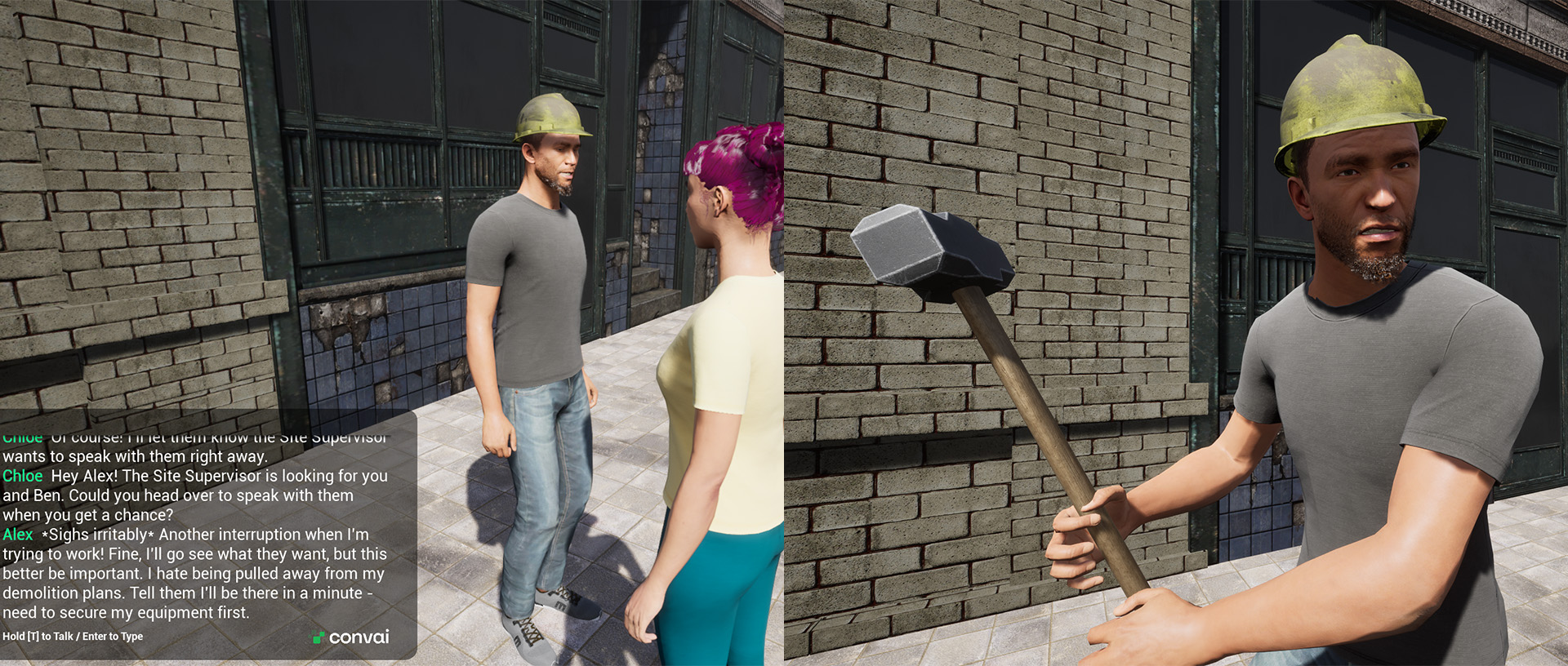
AI Character Solutions for Interactive VR Training Experiences
Research Team
Mohammad Moussa
Mike Darmitz
Khalil Shazam
Partners
Spandrel Interactive Inc.
NRC IRAP
CTO
Impact
- VR training with intelligent NPCs
- Character interaction realism.
- Reusable systems and workflows for scalable AI-driven simulations.
Developing Intelligent VR Training Characters through Custom and Pre-Built Systems in Unreal Engine
This project, a collaboration between Sheridan College’s SIRT Centre and Spandrel Interactive Inc., focused on integrating intelligent characters into Unreal Engine VR training experiences. The primary goal was to identify the most suitable AI character system and explore custom solutions to enhance non-conversational character interactions.
Through extensive background research and evaluation of existing tools, Convai was selected as the foundation. A VR training prototype was developed, featuring three intelligent characters with custom components and significant enhancements. Key achievements included a dynamic environment configuration, a component-based action system, event and conversation history tracking, and a character skill system. The project also explored NPC-to-NPC conversations and resolved VR rendering issues, providing Spandrel Interactive with a robust framework for developing complex and efficient interactive training scenarios
Why AI-Driven Characters Matter in Interactive Training
Spandrel Interactive, in collaboration with Sheridan College’s SIRT Centre, aimed to enhance user engagement in virtual training environments by integrating intelligent characters. With the rising demand for immersive simulations in sectors such as construction, safety, and workforce training, the need for realistic, responsive non-player characters (NPCs) has become critical. The project set out to evaluate whether to develop a custom AI character system or adopt an existing solution that could provide context-aware, skill-based behavior in Unreal Engine environments. The ultimate goal was to improve the efficiency, realism, and adaptability of character-driven training simulations, enabling users to experience dynamic and contextually meaningful interactions.
How the Solution Was Developed
The research team conducted a phased approach beginning with requirements gathering and background research, followed by comparative evaluation of existing AI character systems such as Convai. A test environment was set up in Unreal Engine 5, focusing on integrating these tools with Metahuman avatars and VR platforms (Meta Quest). The prototype development phase introduced several technical innovations:
- A component-based action system for modular behavior.
- A character skill system to simulate task-based outcomes.
- Event and conversation tracking to build contextual memory for NPCs.
- Support for NPC-to-NPC dialogue, albeit in a limited beta form.
Extensive documentation was created to support handoff and future adoption, alongside performance testing and rendering optimization for VR deployment.
A VR Simulation Prototype with NPC Behaviors and Environmental Awareness
The project culminated in a functional prototype featuring three intelligent NPCs capable of recognizing environmental changes, performing tasks based on skill levels, and reacting to past events and conversations. Built within the Unreal Engine framework, the solution integrates advanced animation control, modular behavior assignment, and dynamic scenario management. Beyond the technical success, this work offers a replicable framework for interactive training environments where character realism enhances engagement and learning. The project delivers significant value to Spandrel’s development pipeline, provides research-backed design methods for future collaborators, and sets the foundation for intelligent simulation design in VR training sectors.
